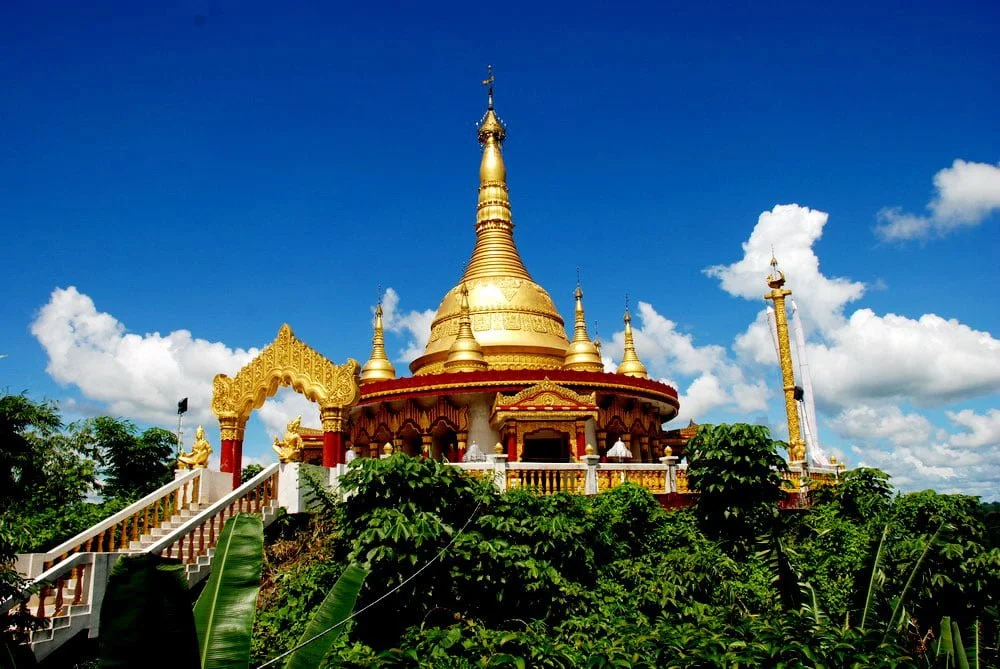

The picturesque district of Bandarban, situated in the Chittagong Hill Tracts of Bangladesh, is home to the magnificent Buddha Dhatu Jadi. Known locally as the Bandarban Golden Temple, it is the largest Theravada Buddhist Temple in Bangladesh and has become a beacon for pilgrims and tourists alike. Surrounded by lush greenery and perched atop a hill, the temple offers a serene destination and a panoramic view of the surrounding landscape.
The history of Buddha Dhatu Jadi is relatively recent when compared to ancient Buddhist sites worldwide. Construction of the temple began in the year 1995 under the leadership of Ven. U Pannya Jota Mahathero, the temple's chief monk. It was completed in 2000 and has since housed relics of the Buddha, known as the Buddha Dhatu, which are enshrined in the temple's central chamber.
The temple's architectural design is influenced by Southeast Asian styles and includes several tiers covered by one large main golden stupa, which is the centerpiece that gives the temple its name. This stupa, gleaming in the sun, can be seen from miles away, attracting visitors through its majestic appearance.
Over the years, this sacred structure has not only been a place of spiritual significance for the Buddhist community but also a popular tourist destination. Initially visited by mostly Buddhist pilgrims, the temple's stunning architecture and peaceful ambiance have drawn a more diverse crowd, including local and international tourists.
The influx of tourists has increased since its completion, especially after being featured in various travel documentaries and guidebooks. Apart from the religious aspect, visitors are also taken by the temple's location, which offers some of the most breathtaking views of the verdant valleys and distant peaks of Bandarban.
The latest tourism trends at Buddha Dhatu Jadi reflect a growing interest in cultural and ecotourism. Visitors are looking for authentic experiences that combine spiritual growth with an appreciation for nature. The temple's management has responded by ensuring that the site remains pristine and the natural surroundings undisturbed.
Moreover, with increased digital connectivity, more people are discovering Buddha Dhatu Jadi through social media and travel blogs. These platforms have helped to highlight not only the temple but also the unique cultural heritage of the hill tracts region and its indigenous communities.
Local authorities have also enhanced tourism facilities, improving roads and offering better accommodations. This has made the site more accessible while still preserving its sanctity. Visitors are encouraged to respect the local customs and the spiritual significance of the temple, fostering a sense of harmony and understanding.
Tourism efforts are now increasingly focusing on sustainable practices that benefit the local economy and ensure that the temple remains a place of tranquility for generations to come.
If you're planning to visit Buddha Dhatu Jadi, the best time to go is between November to March, when the weather is cool and the skies are clear, making it ideal for treks and enjoying the scenic beauty. Be mindful to dress conservatively and follow any posted visitor guidelines to preserve the sanctity of this sacred site. As tourism continues to grow, the temple remains a must-visit destination for those who seek peace, beauty, and a deeper connection with the cultural landscapes of Bangladesh.